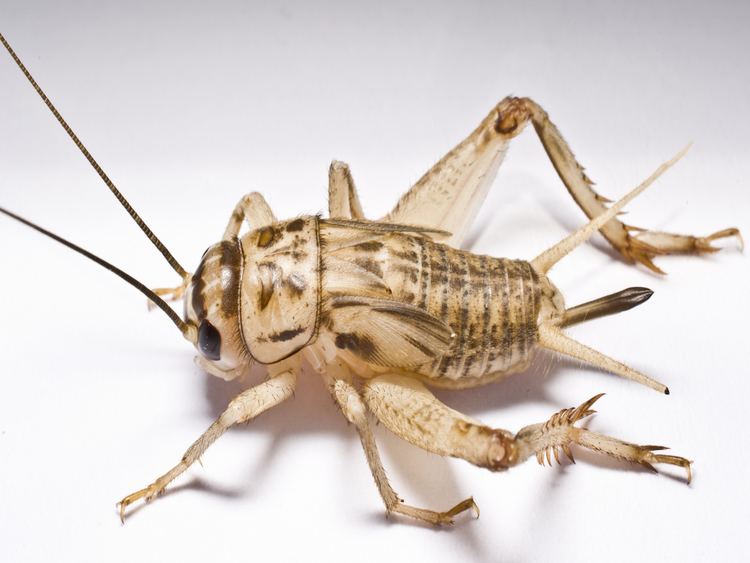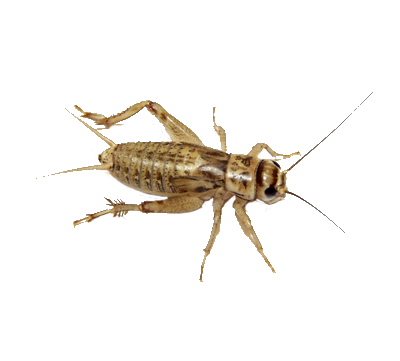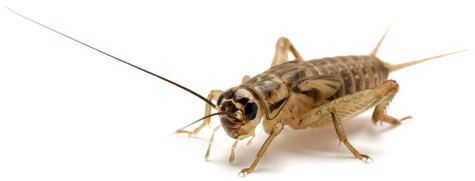Family Gryllidae Higher classification Acheta | Genus Acheta Rank Species | |
 | ||
Similar Cricket, Insect, Acheta, Orthoptera, Gryllus assimilis | ||
Huiskrekel house cricket acheta domesticus in thailand
Acheta domestica, commonly called the house cricket, is a cricket most likely native to Southwestern Asia, but has spread worldwide. They are commercially bred as food for pets such as amphibians, arthropods, birds, and reptiles, but can be kept as pets themselves, as has been the case in China and Japan.
Contents
- Huiskrekel house cricket acheta domesticus in thailand
- Description
- Life cycle
- Human consumption
- References

Description

The house cricket is typically gray or brownish in color, growing to 16–21 millimetres (0.63–0.83 in) in length. Males and females look similar, but females will have an ovipositor emerging from the rear, around 12 millimetres (0.47 in) long. The ovipositor is brown-black, and is surrounded by two appendages. On females, the cerci are also more prominent.
Life cycle

House crickets take two to three months to complete their life cycle at 26 to 32 °C (79 to 90 °F). They have no special overwintering stage, but can survive cold weather in and around buildings, and in dumps where heat from fermentation may sustain them. Eggs are deposited in whatever damp substrate is available. Juveniles resemble the adults except for being smaller and wingless.
Human consumption

House crickets are also farmed in Thailand for human consumption, where they have proven to be more popular than the native cricket species due to their superior taste and texture. They are most commonly eaten as a deep-fried snack and are also sold as a protein powder or protein extract.
